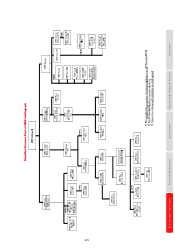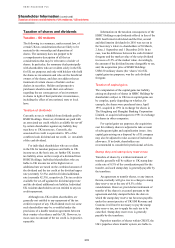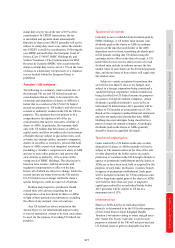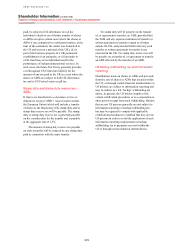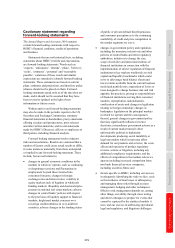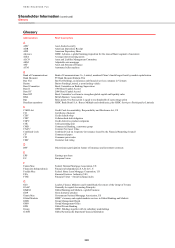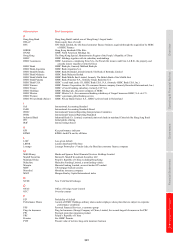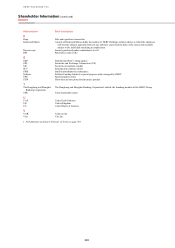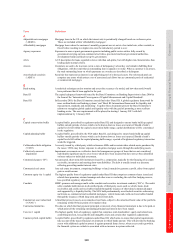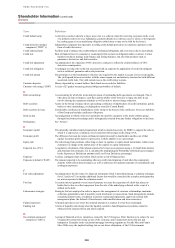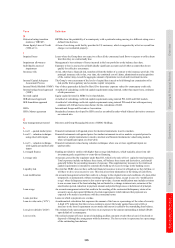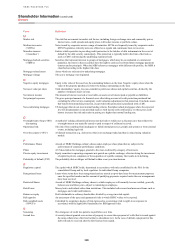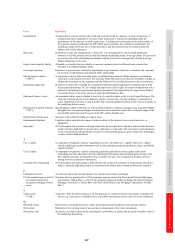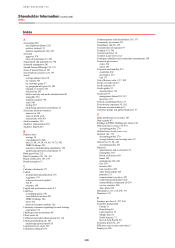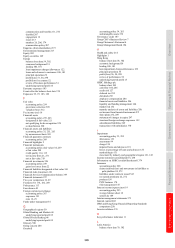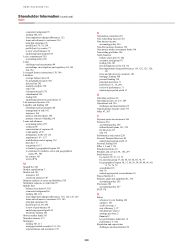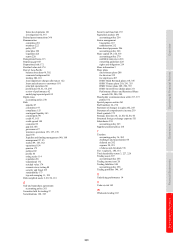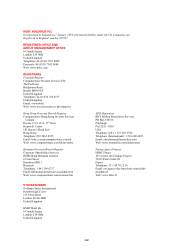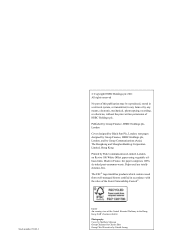HSBC 2010 Annual Report Download - page 387
Download and view the complete annual report
Please find page 387 of the 2010 HSBC annual report below. You can navigate through the pages in the report by either clicking on the pages listed below, or by using the keyword search tool below to find specific information within the annual report.
385
Overview Operating & Financial Review Governance Financial Statements Shareholder Information
Term Definition
H
Historical rating transition
matrices (‘HRTM’)
HRTMs show the probability of a counterparty with a particular rating moving to a different rating over a
defined time horizon.
Home Equity Lines of Credit
(‘HELoC’s)
A form of revolving credit facility provided to US customers, which is supported by a first or second lien
charge over residential property.
I
Impaired loans Loans where the Group does not expect to collect all the contractual cash flows or expects to collect them
later than they are contractually due.
Impairment allowances Management’s best estimate of losses incurred in the loan portfolios at the balance sheet date.
Individually assessed
impairment
Exposure to loss is assessed on all individually significant accounts and all other accounts that do not
qualify for collective assessment.
Insurance risk A risk, other than a financial risk, transferred from the holder of a contract to the insurance provider. The
principal insurance risk is that, over time, the combined cost of claims, administration and acquisition
of the contract may exceed the aggregate amount of premiums received and investment income.
Internal Capital Adequacy
Assessment Process
The Group’s own assessment of the levels of capital that it needs to hold through an examination of its
risk profile from regulatory and economic capital viewpoints.
Internal Model Method (‘IMM’) One of three approaches defined by Basel II to determine exposure values for counterparty credit risk.
Internal ratings-based approach
(‘IRB’)
A method of calculating credit risk capital requirements using internal, rather than supervisory, estimates
of risk parameters.
Invested capital Equity capital invested in HSBC by its shareholders.
IRB advanced approach A method of calculating credit risk capital requirements using internal PD, LGD and EAD models.
IRB foundation approach A method of calculating credit risk capital requirements using internal PD models but with supervisory
estimates of LGD and conversion factors for the calculation of EAD.
ISDA International Swaps and Derivatives Association.
ISDA Master agreement Standardised contract developed by ISDA used as an umbrella under which bilateral derivatives contracts
are entered into.
K
Key management personnel Directors and Group Managing Directors of HSBC Holdings.
L
Level 1 – quoted market price Financial instruments with quoted prices for identical instruments in active markets.
Level 2 – valuation technique
using observable inputs
Financial instruments with quoted prices for similar instruments in active markets or quoted prices for
identical or similar instruments in inactive markets and financial instruments valued using models
where all significant inputs are observable.
Level 3 – valuation technique
with significant unobservable
inputs
Financial instruments valued using valuation techniques where one or more significant inputs are
unobservable.
Leveraged finance Funding provided for entities with higher than average indebtedness, which typically arises from sub-
investment grade acquisitions or event-driven financing.
Leverage ratio A measure, prescribed by regulators under Basel III, which is the ratio of tier 1 capital to total exposures.
Total exposures include on-balance sheet items, off-balance sheet items and derivatives, and should
generally follow the accounting measure of exposure. This supplementary measure to the risk-based
capital requirements is intended to constrain the build-up of excess leverage in the banking sector.
Liquidity risk The risk that HSBC does not have sufficient financial resources to meet its obligations as they fall due, or
will have to do so at an excessive cost. This risk arises from mismatches in the timing of cash flows.
Loan modification An account management action that results in a change to the original terms and conditions of a loan either
temporarily or permanently without resetting its delinquency status, except in case of a ‘modification
re-age’ where delinquency status is also reset to up-to-date. Account modifications may include revisions
to one or more terms of the loan including, but not limited to, a change in interest rate, extension of the
amortisation period, reduction in payment amount and partial forgiveness or deferment of principal.
Loan re-age An account management action that results in the resetting of the contractual delinquency status of an
account to up-to-date upon fulfilment of certain requirements which indicate that payments are
expected to be made in accordance with the contractual terms.
Loans past due Loans on which repayments are overdue.
Loan-to-value ratio (‘LTV’) A mathematical calculation that expresses the amount of the loan as a percentage of the value of security.
A high LTV indicates that there is less cushion to protect the lender against house price falls or
increases in the loan if repayments are not made and interest is added to the outstanding loan balance.
Loss given default (‘LGD’) The estimated ratio (percentage) of the loss on an exposure to the amount outstanding at default (EAD)
upon default of a counterparty.
Loss severity The realised amount of losses incurred (including ancillary amounts owed) when a loan is foreclosed or
disposed of through the arrangement with the borrower. The loss severity is represented as a percentage
of the outstanding loan balance.


